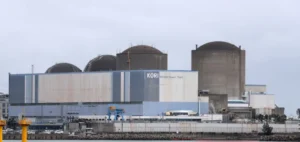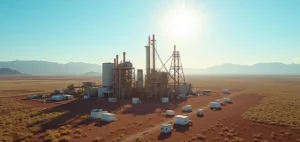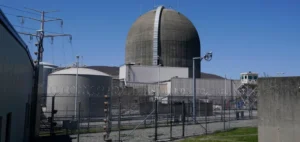France’s nuclear power plants comprise 56 reactors at 18 strategically located sites across the country. These facilities are crucial to the country’s energy economy, supplying a substantial proportion of the electricity consumed. Among these emblematic sites, the Flamanville nuclear power plant is particularly well known for its plans to build a third-generation EPR (European Pressurized Reactor) reactor.
Nevertheless, the project has been plagued by various delays and technical complications, raising questions about the safety and reliability of France’s entire nuclear fleet.
However, the government, led by Emmanuel Macron, maintains a firm commitment to this energy source with the creation of new reactors, its Acceleration Bill and ongoing investment in modernization and safety projects.
Where are France’s 19 nuclear power plants?
France’s energy landscape is dominated by nuclear power plants, with a total of 19 facilities spread across the country. These power plants play a crucial role in electricity generation in France, supplying around 70% of the energy consumed.
However, the location of these nuclear power plants remains a matter of concern for many citizens, especially those living nearby. France’s nuclear power plants are mainly located along the coast, near major rivers or in remote areas. This ensures an adequate supply of water for cooling the reactors, and minimizes risks in the event of an accident.
France’s largest nuclear power plants include :
Flamanville, Gravelines, Paluel and Penly are all located along the northern coast of France. These plants have several reactors and are capable of producing large quantities of electricity.
The Cattenom nuclear power plant, near the border with Luxembourg and Germany, is also one of the country’s main facilities. Other nuclear power plants are located near major rivers such as the Loire, Garonne and Rhône. These include the Belleville, Chinon, Saint-Laurent, Bugey and Tricastin power plants. Thanks to the proximity of these watercourses, power plants can benefit from an adequate water supply and an efficient cooling system.
Finally, some nuclear power plants are located in remote areas of France, such as the Fessenheim plant in Alsace. The plant is one of the country’s oldest, and is due to be shut down in the coming years, in line with the government’s objective of reducing France’s dependence on nuclear power.
Flamanville nuclear power plant

The Flamanville power plant in Normandy is a nuclear facility that uses an EPR (European Pressurized Reactor) to generate electricity. The construction program at Flamanville, known as Flamanville 3, began in 2007, but has been subject to numerous delays and technical problems. The Flamanville EPR was originally scheduled for commissioning in 2012, but due to these problems, the commissioning date has been pushed back several times. The site’s rising costs and construction times have been the subject of much criticism and controversy.
Power
The FlamanvilleEPR is designed to deliver 1,650 megawatts of power, making it one of the most powerful reactors in the world. However, due to construction delays and technical problems, it is difficult to say exactly when the plant will be fully operational. What’s more, the exact price of the Flamanville EPR is also controversial. Initially estimated at 3.3 billion euros, the cost of construction has risen significantly over the years. According to some estimates, the total cost of the Flamanville EPR could reach up to 12.4 billion euros, making it one of the most expensive reactors ever built.
The Flamanville power plant is currently undergoing pre-commissioning tests and trials. Once fully operational, it should supply a significant proportion of the electricity required by the Normandy region. Despite past difficulties, the Flamanville plant represents an example of perseverance and determination in the pursuit of new-generation nuclear power in France.
Gravelines nuclear power plant

The Gravelines nuclear power plant is one of the largest in Europe. It is located in the Nord department of France, on the shores of the North Sea. The plant is equipped with six reactors that generate electricity using the nuclear fission process.
Power
Gravelines has a total output of around 5,400 megawatts of electricity, making it one of the country’s most powerful nuclear power plants.
The construction of the Gravelines EPR is one of the most important projects for the Gravelines power plant. The EPR, or European Pressurized Reactor, is a new generation of nuclear reactors designed to be safer and more efficient.
The Gravelines EPR will be the first reactor of this type to be built in France. It should provide an additional 1,600 megawatts of electrical power.
Penly nuclear power plant
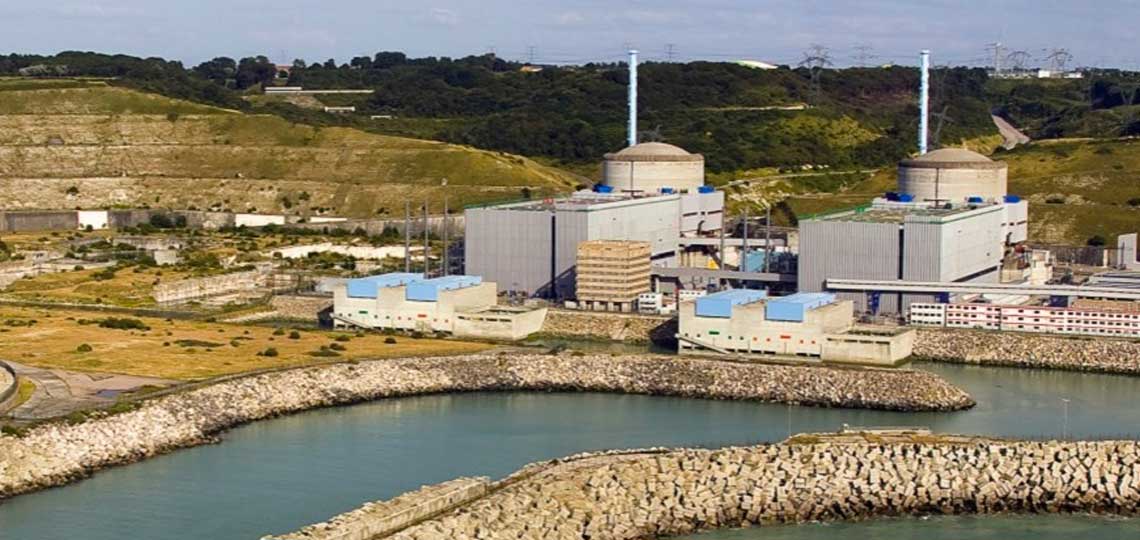
The Penly nuclear power plant is located near Penly, France. It is located on the Normandy coast, in the Seine-Maritime département. The Penly nuclear power plant was commissioned in 1991 and comprises two pressurized water reactors.
Power
In terms of power, the Penly plant has a generating capacity of 2,600 megawatts. This makes it one of the most powerful nuclear power plants in France.
Paluel nuclear power plant
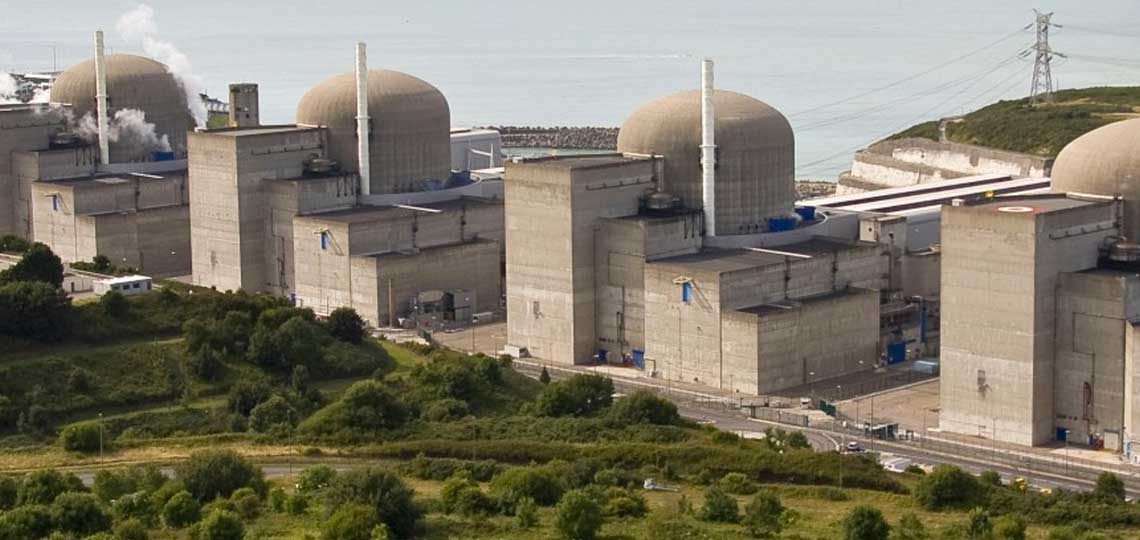
The Paluel nuclear power plant is located in the commune of Paluel, Normandy, on the English Channel coast. It is one of France’s largest nuclear power plants.
The Paluel power plant comprises four PWR (pressurized water reactor) nuclear reactors, each with a capacity of 1,330 MW. They were commissioned between 1984 and 1986.
Nuclear-generated electricity employs around 1,300 permanent staff, as well as numerous contractors and subcontractors.
Power
The plant comprises four PWR (pressurized water reactor) nuclear reactors with a total installed capacity of 5,256 MW.
Cattenom nuclear power plant

The Cattenom nuclear power plant is located in the Moselle region of northeastern France. Construction began in 1979, and the first reactors were commissioned in 1986.
Power
It comprises four pressurized nuclear reactors with a total capacity of 5,448 MW.
It also plays a crucial role in supplying electricity to the Grand Est region, as well as to Belgium and Luxembourg. It employs around 1,200 people, most of them permanent EDF employees, and generates several thousand indirect jobs.
Belleville nuclear power plant
The Belleville nuclear power plant is located in the Cher department of France. It lies 50 kilometers north of Bourges. The Belleville power plant is an important site in France’s nuclear power generation sector.
Power
It comprises two pressurized water reactors with a total power output of 2,600 megawatts. These reactors were commissioned in 1987 and 1988 respectively. The Belleville plant also contributes to the local economy by creating jobs. It has over 600 permanent employees, including engineers, technicians and support staff. In addition to direct employment, the Belleville plant generates a significant number of indirect jobs in sectors such as maintenance, safety and ancillary services.
Chinon nuclear power plant
The Chinon nuclear power plant, originally a gas-fired power station built in the 1960s, is located in the commune of Chinon in the Indre-et-Loire region of France. It is one of the region’s major employers, offering numerous opportunities for skilled and specialized employment.
Power
It has four pressurized water reactors (PWRs) in operation: Chinon B1, B2, B3, and B4. Each has a rated electrical capacity of around 900 megawatts (MW), giving a total power generation capacity of around 3,600 MW for the plant as a whole.
Saint-Laurent nuclear power plant
The Saint-Laurent nuclear power plant, located in the Basse-Normandie region of France, is an electricity generation facility of national importance.
Power
It comprises two pressurized water reactors (PWRs), each rated at 900 megawatts (MWe). Inaugurated in 1983.
Bugey nuclear power plant
The Bugey nuclear power plant is located in the Ain region of France, near the city of Lyon. It comprises several pressurized water reactors (PWRs). The nuclear fuel reactors currently in operation were commissioned between the late 1970s and early 1980s:
- Bugey 2: commissioning in 1978
- Bugey 3: commissioning in 1979
- Bugey 4: commissioning in 1979
- Bugey 5: commissioning in 1980
There was also a reactor, Bugey 1, which was a gas-cooled heavy water reactor. Commissioned in 1972, the reactor was shut down in 1994 and is currently being dismantled.
Power
This energy production site has four nuclear reactors, each with a capacity of 900 megawatts, operated by EDF.
Tricastin nuclear power plant
The Tricastin nuclear power plant is located in southeastern France, between the departments of Drôme and Vaucluse. It comprises four PWR reactors, all with a rated output of around 900 MWe produced in France.
Nuclear reactors and their commissioning :
- Tricastin 1: commissioning in 1980
- Tricastin 2: commissioning in 1980
- Tricastin 3: commissioning in 1981
- Tricastin 4: commissioning in 1981
Power
If we add up the rated power of these four reactors, the overall capacity of the Tricastin plant would be around 3,600 MW.
Fessenheim nuclear power plant
The Fessenheim nuclear power plant was located in the Haut-Rhin department of Alsace, close to the German border. The plant consisted of two pressurized water reactors (PWRs), each rated at around 900 megawatts (MW).
If we add up the rated output of the two reactors, the overall output of the Fessenheim plant was therefore around 1,800 MW.
It is important to note that the Fessenheim power plant has been closed for good. The first reactor was decommissioned in February 2020, and the second in June 2020. The closure of this plant, the oldest in operation in France at the time, was the subject of prolonged public debate due to concerns about its safety and age.
Blayais nuclear power plant
The Blayais nuclear power plant is located in the Gironde department, near Bordeaux, in southwestern France.
The reactors were commissioned on the following dates:
- Blayais 1: commissioning in 1981
- Blayais 2: commissioning in 1982
- Blayais 3: commissioning in 1983
- Blayais 4: commissioning in 1983
Power :
It comprises four pressurized water reactors (PWRs), each with a rated output of around 900 megawatts (MW).
If we add up the rated output of the four reactors, the total output of the Blayais power plant would therefore be around 3,600 MW.
Saint-Alban nuclear power plant
The Saint-Alban nuclear power plant is located in the department of Isère, in the Auvergne-Rhône-Alpes region of southeastern France.
The reactors were commissioned on the following dates:
- Saint-Alban 1: commissioning in 1985
- Saint-Alban 2: commissioning in 1986
Power :
The plant is equipped with two pressurized water reactors (PWR), each with a rated output of around 1,300 megawatts (MW). If we add up the rated output of the two reactors, the overall output of the Saint-Alban plant would therefore be around 2,600 MW.
Chooz nuclear power plant
The Chooz nuclear power plant is located in the Ardennes department, in the Grand Est region of northeastern France, close to the border with Belgium.
The reactors were commissioned on the following dates:
- Chooz B1: commissioning in 1996
- Chooz B2: commissioned in 1997
Power
The plant is equipped with two pressurized water reactors (PWRs), each with a rated output of around 1,500 megawatts (MW). If we add up the rated output of the two reactors, the total output of the Chooz power plant would therefore be around 3,000 MW.
It should be noted that the Chooz plant also had an experimental reactor, Chooz A, which was commissioned in the 1960s and subsequently dismantled.
Civaux nuclear power plant
The Civaux nuclear power plant is located in the Vienne department, in the Nouvelle-Aquitaine region of western France. The plant comprises two pressurized water reactors (PWRs), each with a rated output of around 1,450 megawatts (MW).
The reactors were commissioned on the following dates:
- Civaux 1: commissioning in 1997
- Civaux 2: commissioning in 1999
Power
If we add up the rated output of the two reactors, the overall output of the Civaux plant would therefore be around 2,900 MW.
Dampierre nuclear power plant
The Dampierre nuclear power plant is located in the Loiret department of the Centre-Val de Loire region, in north-central France. The plant is equipped with four pressurized water reactors (PWRs), each with a rated output of around 900 megawatts (MW).
The reactors were commissioned on the following dates:
- Dampierre 1: commissioning in 1980
- Dampierre 2: commissioning in 1980
- Dampierre 3: commissioning in 1981
- Dampierre 4: commissioning in 1981
Power
Adding together the rated output of the four reactors, the total output of the Dampierre power plant would therefore be around 3,600 MW.
Cruas nuclear power plant
The Cruas nuclear power plant is located in the Ardèche department, in the Auvergne-Rhône-Alpes region of southeastern France. The plant is equipped with four pressurized water reactors (PWRs), each with a rated output of around 900 megawatts (MW).
The reactors were commissioned on the following dates:
- Cruas 1: commissioned in 1983
- Cruas 2: commissioned in 1984
- Cruas 3: commissioned in 1984
- Cruas 4: commissioned in 1985
Power:
If we add up the rated output of the four reactors, the total output of the Cruas power plant would therefore be around 3,600 MW.
Golfech nuclear power plant
The Golfech nuclear power plant is located in the department of Tarn-et-Garonne, in the Occitanie region of southwestern France. The plant is equipped with two pressurized water reactors (PWR), each with a rated output of around 1,300 MWe.
The reactors were commissioned on the following dates:
- Golfech 1: commissioning in 1991
- Golfech 2: commissioning in 1993
Power
If we add up the rated output of the two reactors, the overall output of the Golfech plant would therefore be around 2,600 MW.
Nogent nuclear power plant
The Nogent nuclear power plant is located in the Seine-et-Marne department of the Île-de-France region. The plant is equipped with two pressurized water reactors (PWR), each with a rated output of around 1,300 megawatts (MW).
The reactors were commissioned on the following dates:
- Nogent 1: commissioning in 1987
- Nogent 2: commissioning in 1988
Power
Adding the rated output of the two reactors, the overall output of the Nogent power plant would therefore be around 2,600 MW.
Nuclear safety in France is a major concern
The French Nuclear Safety Authority (ASN) rigorously supervises the safe operation of nuclear facilities in France. France currently operates 56 nuclear reactors, mostly pressurized water reactors, in 18 power plants. These facilities are managed by Électricité de France (EDF) and closely monitored by ASN.
In terms of regulation, strict laws govern the safety and security of the nuclear sector in France.
All reactors, whether under construction or already operational, must comply with the safety standards defined by the ASN. Compliance with these guidelines is vital to the long-term future of the nuclear industry, which plays a key role in the country’s energy supply.
In short, nuclear safety in France is a government priority, and multiple players, including ASN and EDF, work in synergy to ensure the safe operation of nuclear facilities. It is imperative to refer to up-to-date data for accurate information, as the sector is constantly evolving.








